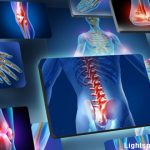Many physicians associate glucocorticoids with osteoporosis. The association is confounded, however, by the fact that studies on the subject have frequently included postmenopausal women who are at an already increased risk for osteoporosis. That said, in vitro studies have specifically demonstrated that glucocorticoids directly affect bone cells and decrease bone formation, lending credence to the belief that glucocorticoids are bad for bone. The understanding of the relationship between glucocorticoids and bone becomes more puzzling, however, by the publication of a new paper that reports treatment with the glucocorticoid dexamethasone (dex) may actually increase trabecular bone density.
Louise Grahnemo, PhD, postdoctoral fellow at the University of Gothenburg in Sweden and colleagues published the results of their study on female mice in the Journal of Endocrinology.1 The investigators designed their research to determine the mechanism behind the effects of glucocorticoids on bone, both in general and specifically during menopause.
They focused their efforts on the role that lymphocytes play in the mix. They highlighted these cells because of their documented role in both postmenopausal and arthritis-induced osteoporosis. Moreover, the investigators were intrigued by the knowledge that glucocorticoids target lymphocytes.
Grahnemo et al report that treatment with the glucocorticoid dex, but not the nonsteroidal antiinflammatory drug carprofen (carp), increased trabecular bone mineral density (BMD) in female C57BL/6 or SCID mice as compared with control and carp-treated mice. In addition, dex-treated mice had markedly decreased numbers of splenic T and B cells, and lower levels of serum bone turnover markers, than carp-treated mice.
The team next investigated the role of estrogen in the relationship between glucocorticoids and bone. They used ovariectomized (ovx) mice as a model for postmenopausal osteoporosis. Ovx induces a decrease in bone volume fraction, trabecular thickness and trabecular number. The investigators sham-operated or ovariectomized C57BL/6 mice and, two weeks later, treated the recovering mice with dex, carp or a vehicle control. Treatment was continued for 2.5 weeks. The mice were then sacrificed and their femurs phenotyped using high-resolution micro-computed tomography and peripheral quantitative computed tomography. T and B cell populations in the spleen and bone marrow were quantified by flow cytometry and the serum was analyzed for markers of bone turnover. The investigators found that treatment with dex, but not carp, increased trabecular BMD in ovx C57BL/6 mice. They also found that the bone effects (cortical content and thickness) were dex-dose dependent.
While dex and carp are both anti-inflammatory agents, dex has lymphocyte-suppressive effects that carp does not have. As expected, treatment with dex, but not carp, decreased lymphocyte count. Moreover, dex was unable to increase BMD in ovx mice lacking functional T and B cells, suggesting that lymphocytes are critical for the effect of dex on bone.

